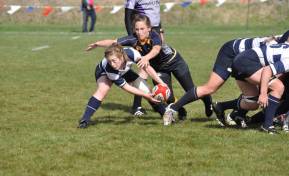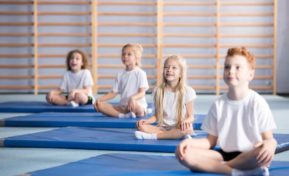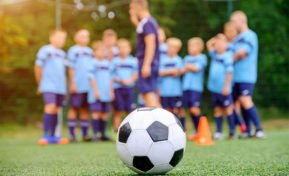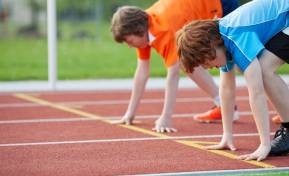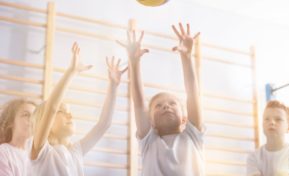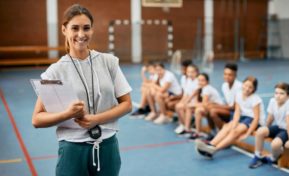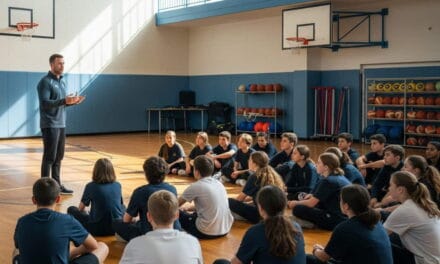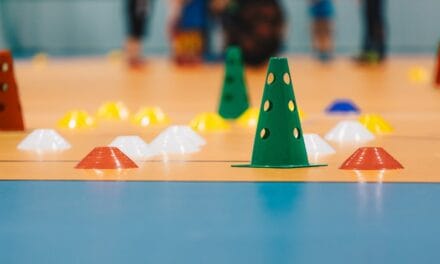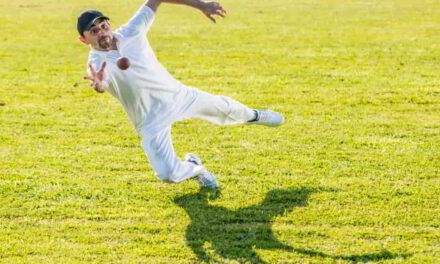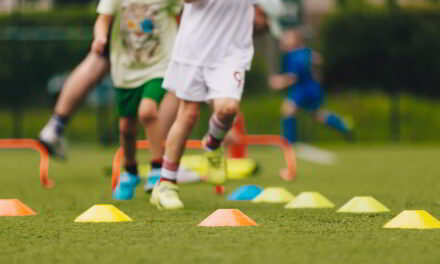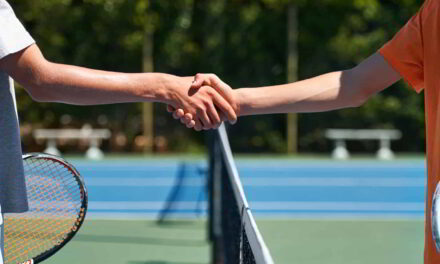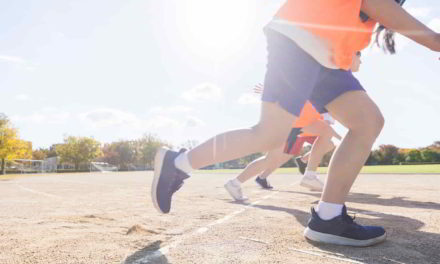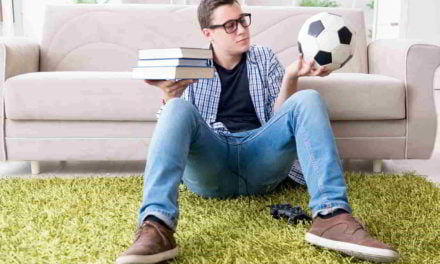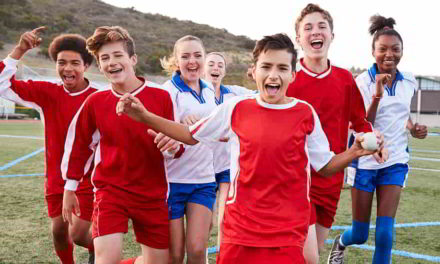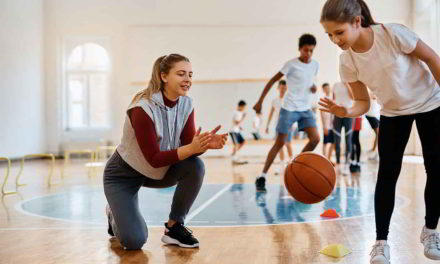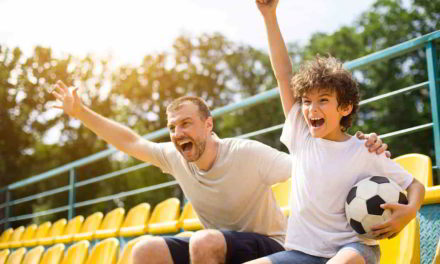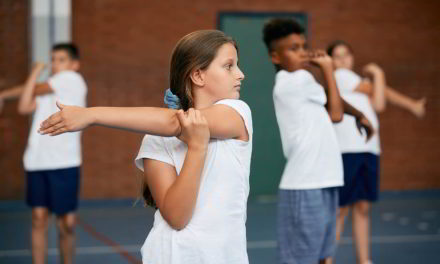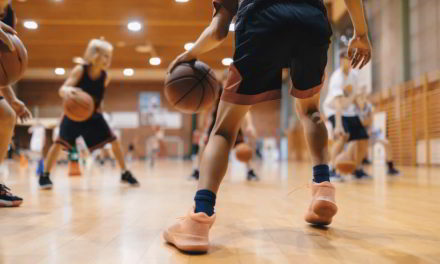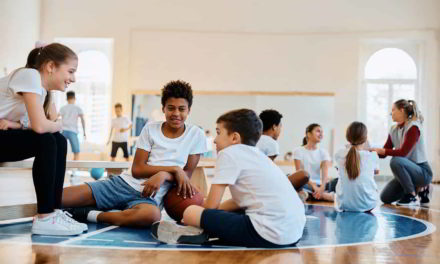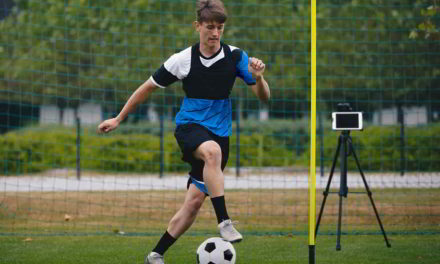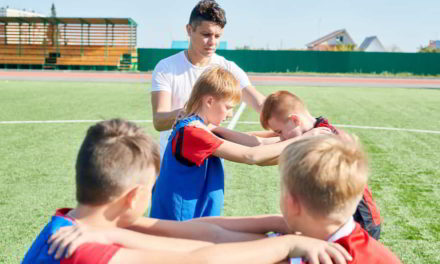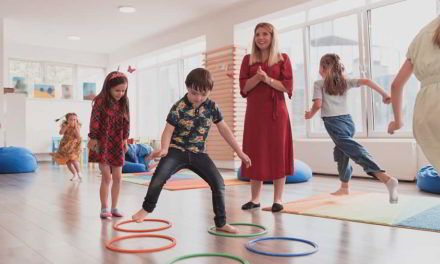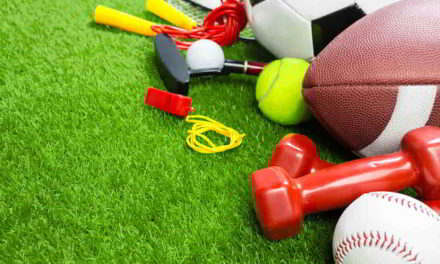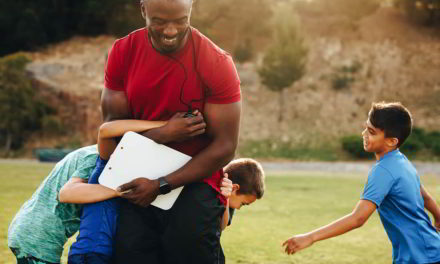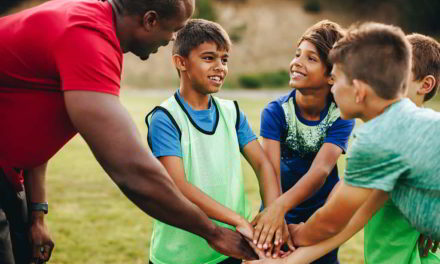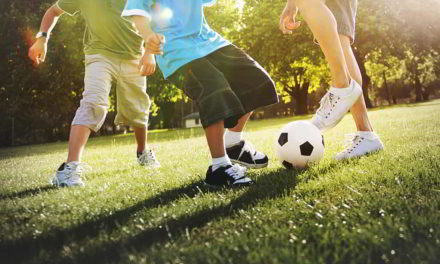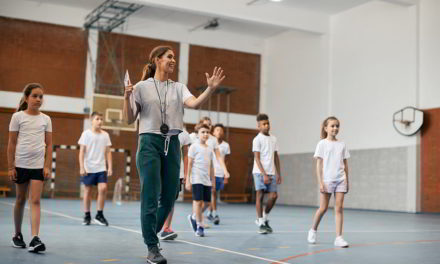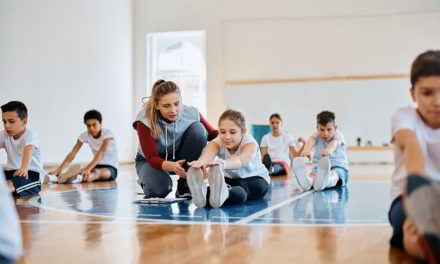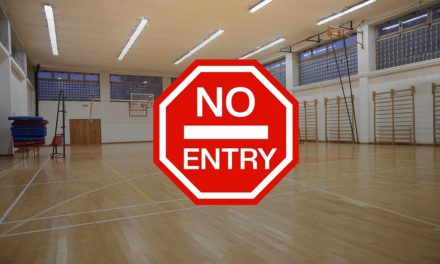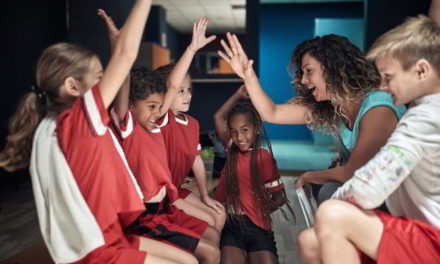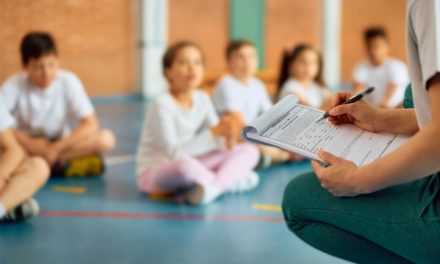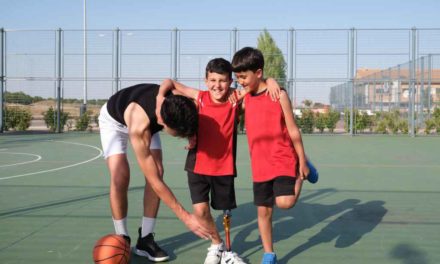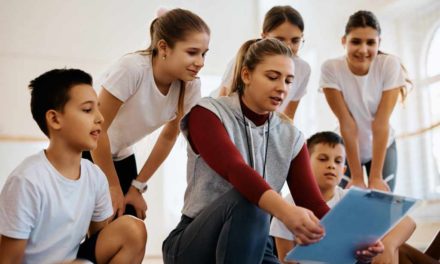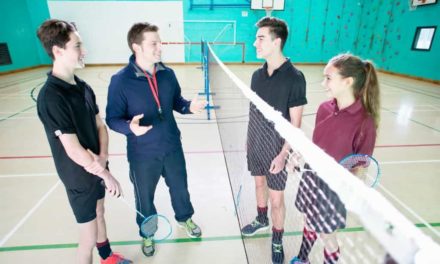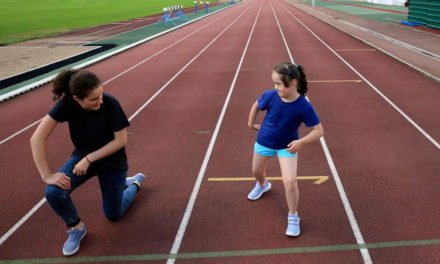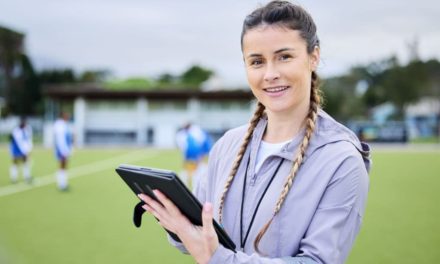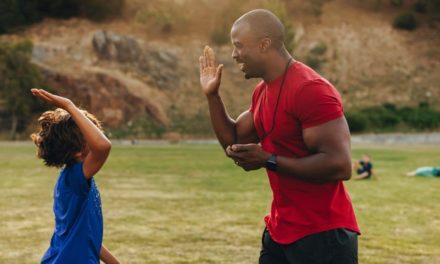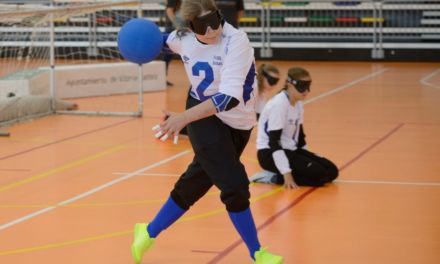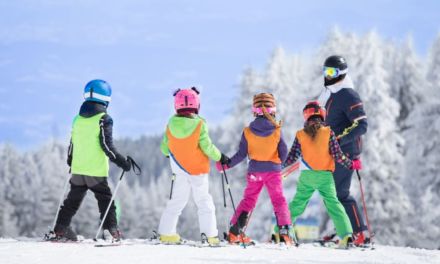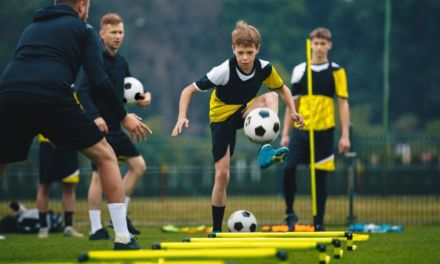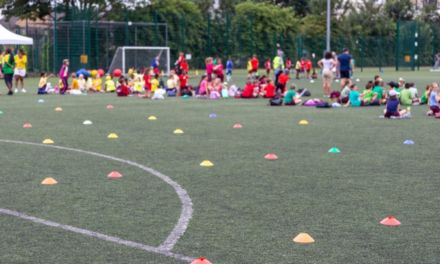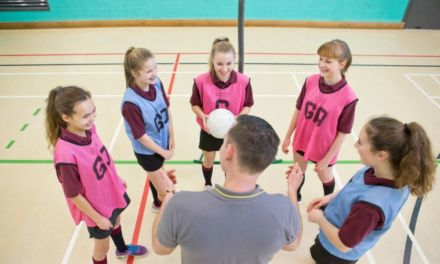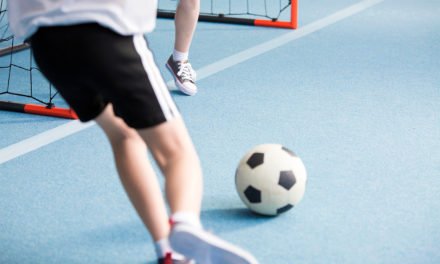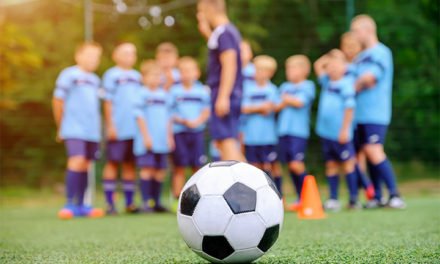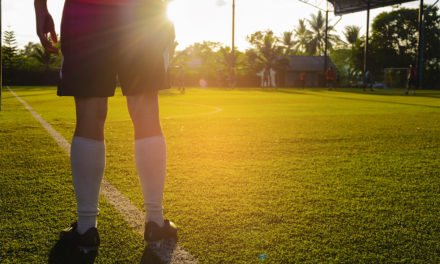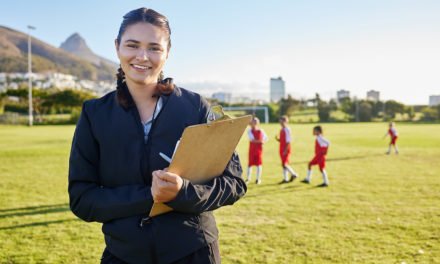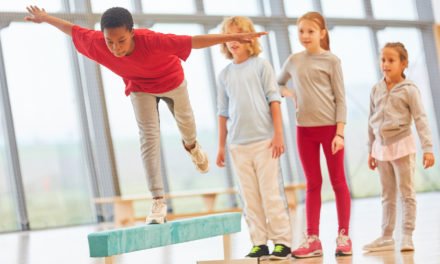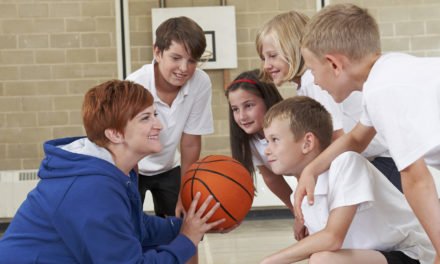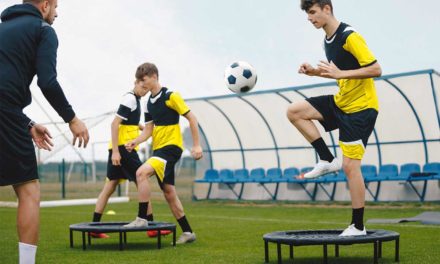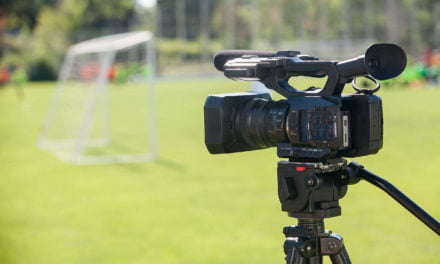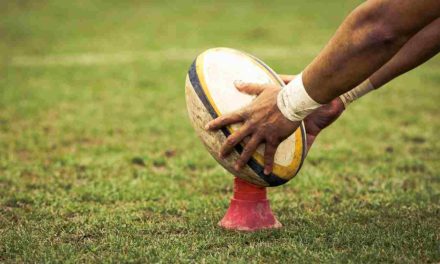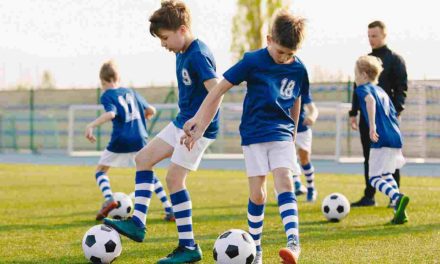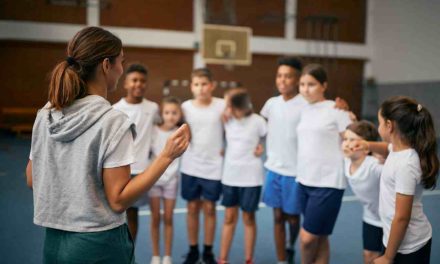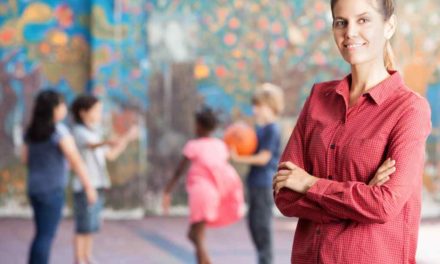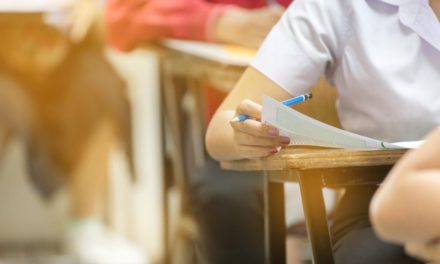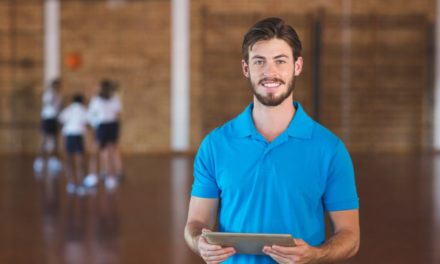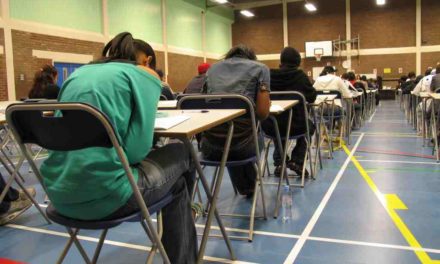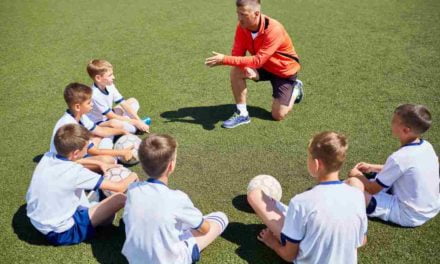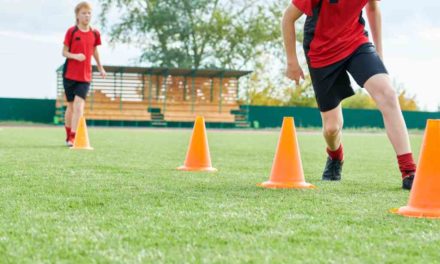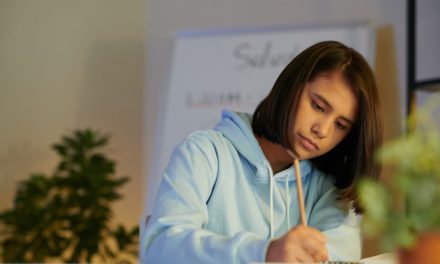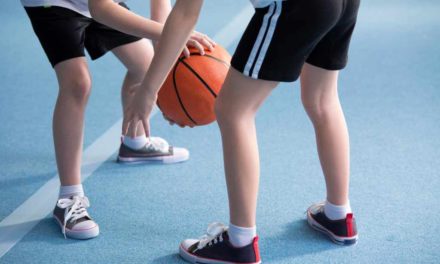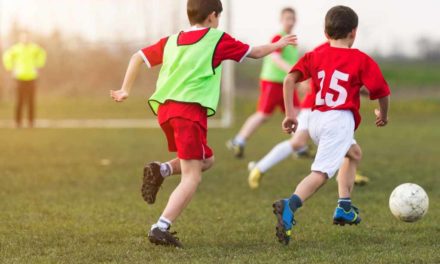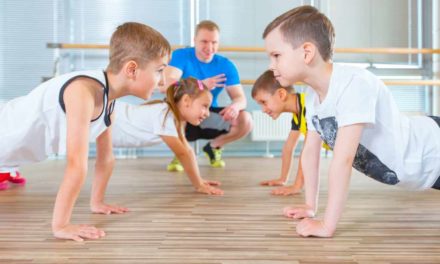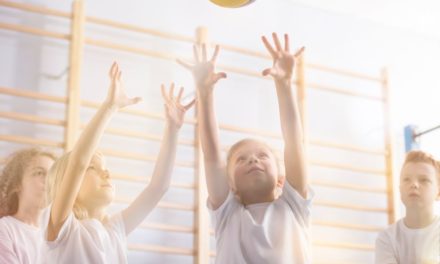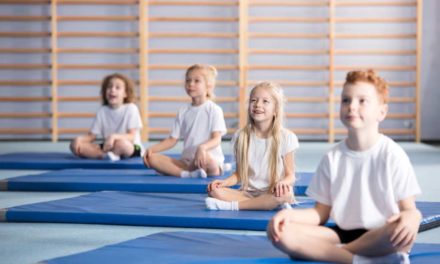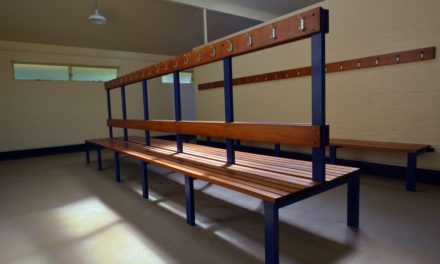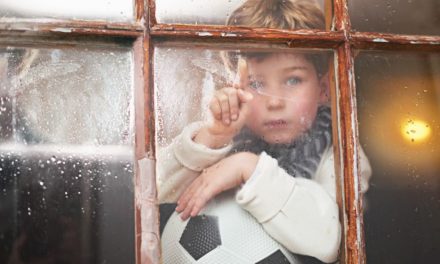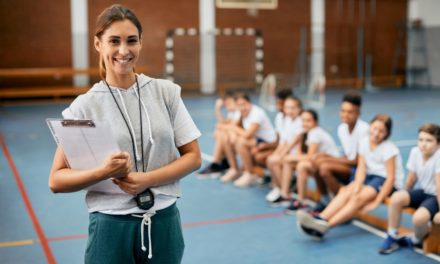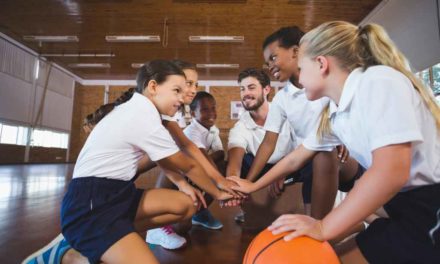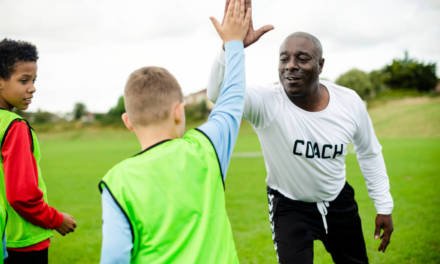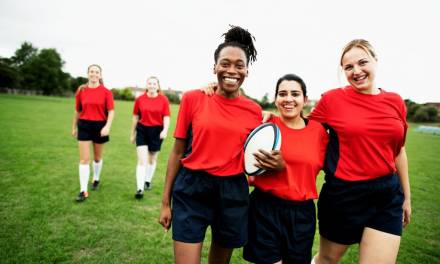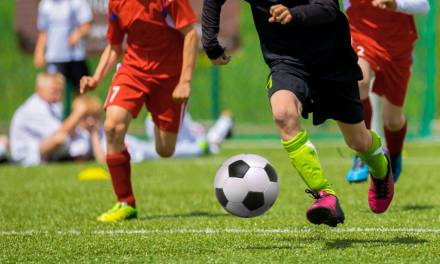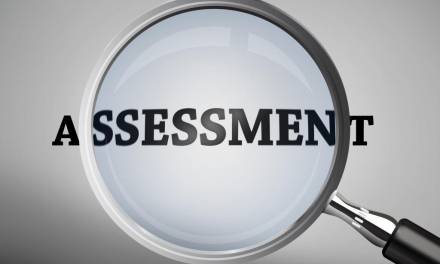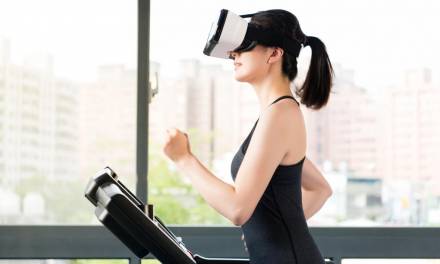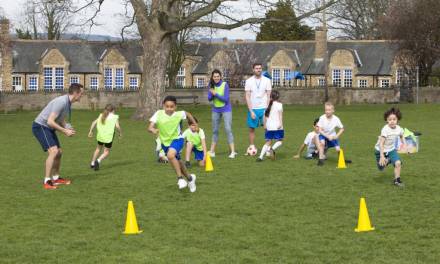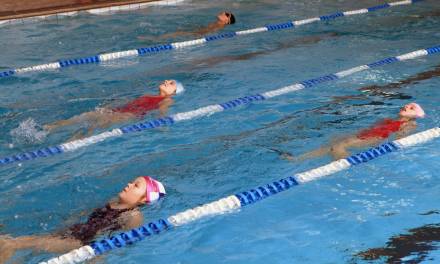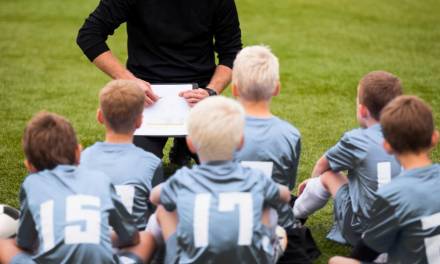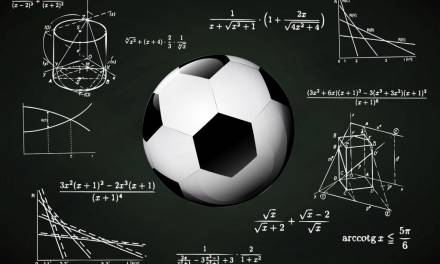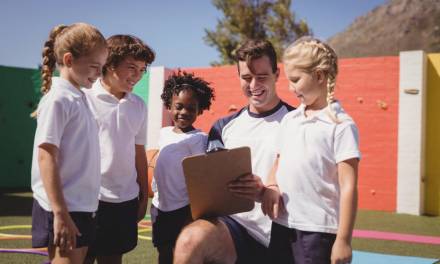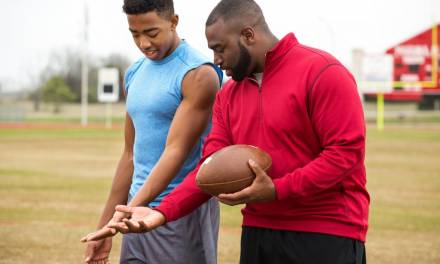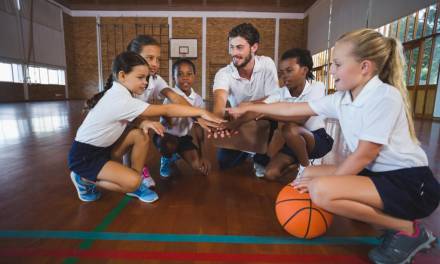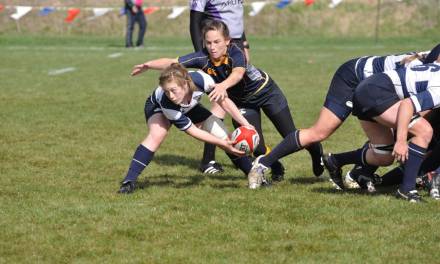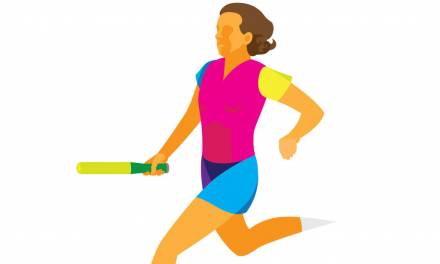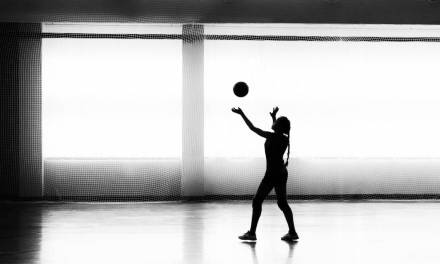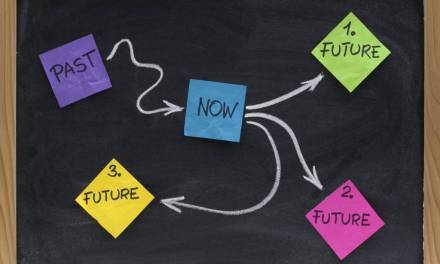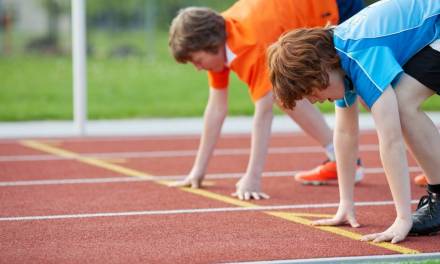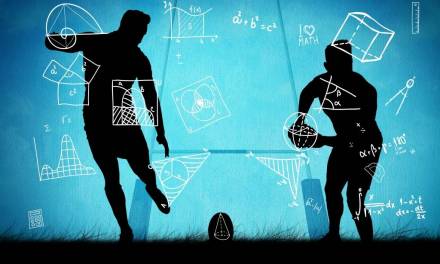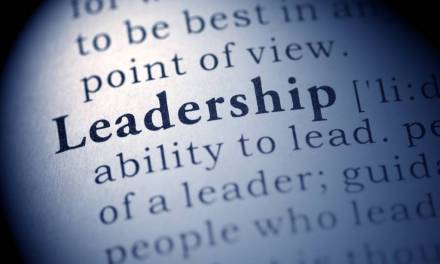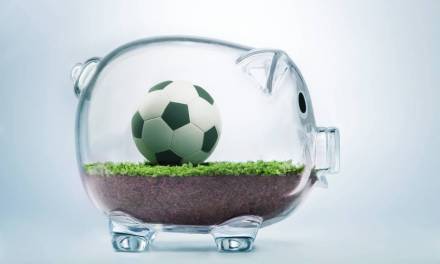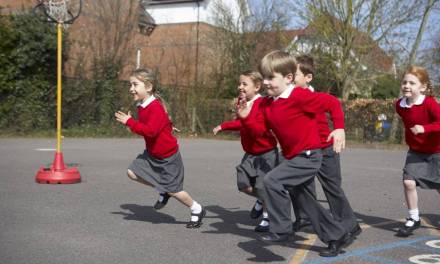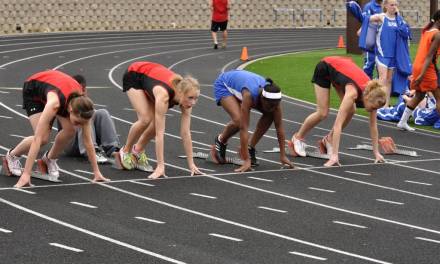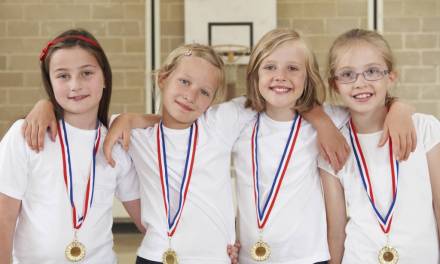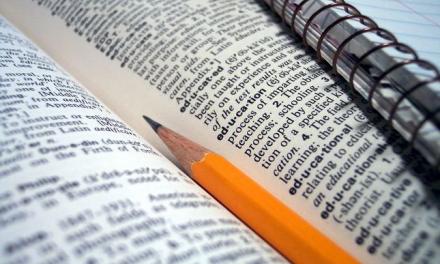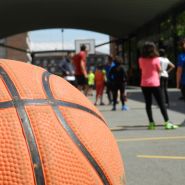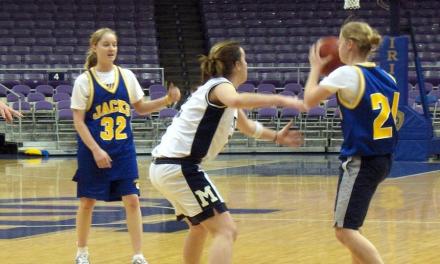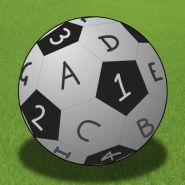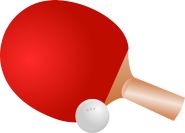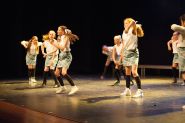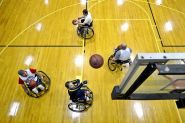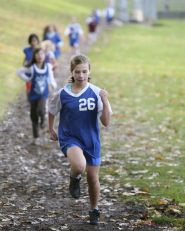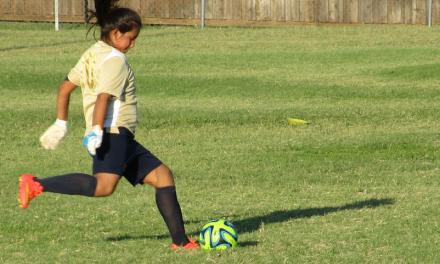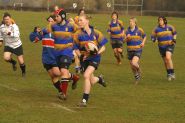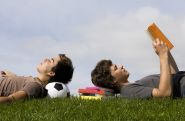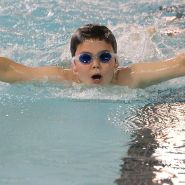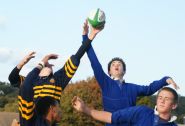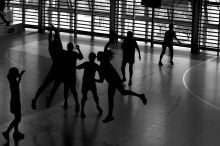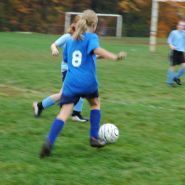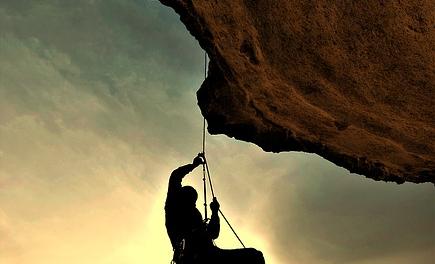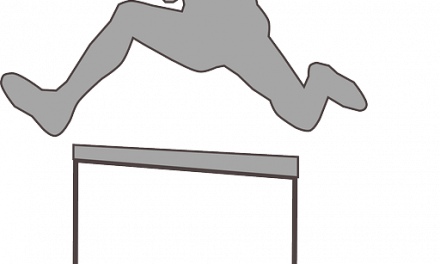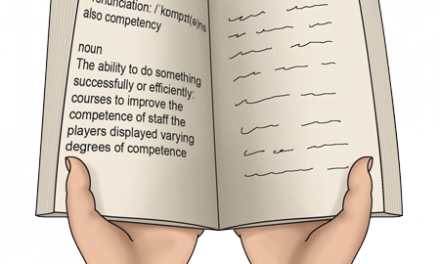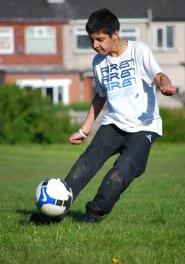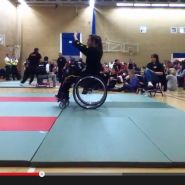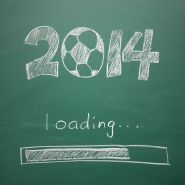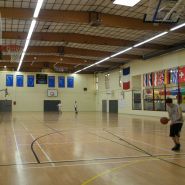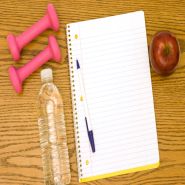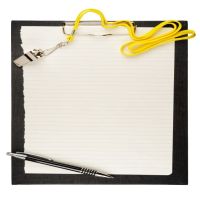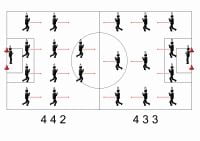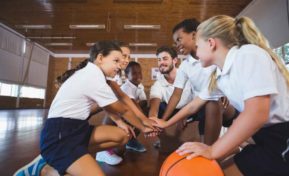
Teaching PE
RECOMMENDED
Starting Strong: Setting Expectations and Positive Behaviours in PE
Reading time: 2 minutes
The first few weeks of any school year are crucial, and in physical education (PE), they set the tone for the entire year. A strong start is not just about getting students active; it’s about establishing a foundation of clear expectations and positive behaviours. When students know what is expected of them, they feel more secure and are more likely to thrive, both physically and socially.
Read MoreMental health matters: Supporting teachers and students through PE
Reading time: 2 minutes
Physical education (PE) is often seen as a way to improve physical fitness and teach teamwork. However, its role extends far beyond the gym and playing field. PE can be a powerful tool for promoting mental health and well-being for both students and teachers. In a world where mental health challenges are on the rise, integrating mental health support into the PE curriculum is more important than ever.
Read MoreSchemes of Work: How to reduce your workload with an effective approach
Reading time: 3 minutes
The thought of planning lessons, designing activities, and ensuring comprehensive coverage can feel overwhelming for even the most seasoned PE teacher. The relentless pace of school life often leaves little room for proactive preparation, leading to reactive planning and increased workload throughout the term. However, there are powerful tools at your disposal that can significantly reduce this burden and set you up for success: well-structured Schemes of Work (SoW).
Read MorePhysical Literacy: Building the Foundation for Lifelong Fitness
Reading time: 2 minutes
In a world increasingly dominated by screens and sedentary lifestyles, the concept of “physical literacy” is more crucial than ever. It’s not just about being active; it’s about developing the fundamental movement skills, knowledge, and confidence to participate in a wide range of physical activities for life. Think of it as the ABCs of movement – just as reading and writing unlock a world of knowledge, physical literacy unlocks a world of health, well-being, and enjoyment through movement.
Read MoreLevel Up Their Health: How PE Tackles Childhood Obesity
Reading time: 3 minutes
Childhood obesity is a growing concern, casting a long shadow over the health and well-being of our youngest generation. The statistics can be sobering, but amidst the challenges, there’s a powerful and often underutilised tool in our arsenal: Physical Education (PE). Far from being just a break from academics, a well-structured and engaging PE programme plays a vital role in promoting healthy lifestyles and directly combating childhood obesity.
Read MoreSafety First, Fun Always: Crafting Safe and Effective PE Lessons
Reading time: 3 minutes
Physical Education (PE) lessons are a vital part of a child’s development, fostering not just physical fitness but also teamwork, resilience, and a love for movement. However, the dynamic nature of PE demands a paramount focus on safety. A well-structured and thoughtfully executed lesson prioritises the well-being of every student, ensuring that learning and fun go hand-in-hand.
So, how can educators create PE environments where safety is not just a rule, but a deeply ingrained practice?
Read MoreAssessing PE Progress: Tools for Tracking and Supporting Student Growth
Reading time: 3 minutes
Physical Education (PE) is far more than just a break from academics. It’s a crucial component of a student’s holistic development, fostering physical literacy, healthy habits, and essential life skills. But how do we truly measure the impact of our PE programmes? How do we ensure students are not just participating, but genuinely progressing? This blog explores the tools and strategies for effectively assessing PE progress, ultimately supporting student growth and engagement.
Read MoreNew Opportunities: Reducing Workload with Ready-Made PE Resources
Reading time: 2 minutes
We’re well into 2025 now and the new year can provide a new sense of hope with fresh opportunities. However, there is still the old pressure of creating lesson plans, managing equipment and everything else.
So, how can we make this year different? How can we maximise our physical education delivery impact while minimising the stress? Online PE resources could alleviate the added pressure that haunts many teachers.
Read MoreField of Dreams: Essential Fielding Skills for Team Success
Reading time: 3 minutes
Developing a range of fielding skills during striking/fielding activities can be the difference between success and failure. Below are 5 drills and activities that can be used to develop a range of core skills:
Read More5 ways to support students with SEND in PE and promote inclusivity
Reading time: 3 minutes
Physical education plays a pivotal role in the holistic development of school pupils, and its significance is particularly pronounced for students with special educational needs (SEN). PE can be a powerful tool to enhance not only physical health but also emotional well-being, social skills, and academic performance for these students. Tailored PE programs can address diverse needs, foster inclusion, and promote a sense of achievement and confidence. Below are 5 ways in which PE can support students with SEND.
Read MoreSportsmanship 101: Fostering Positive Behaviour in PE
Reading time: 2 minutes
Physical Education (PE) is more than just learning how to throw a ball or run fast. It’s a crucial space for students to develop essential life skills, including teamwork, communication, resilience, and above all, sportsmanship. Good sportsmanship fosters a positive and inclusive environment where everyone feels valued and motivated to participate, learn, and grow. Let’s delve into how we can promote and nurture positive behaviour in PE classes.
Read MoreLevelling the Playing Field: Adaptive PE Strategies for All Students
Reading time: 2 minutes
Physical Education (PE) is a vital part of a well-rounded education, promoting physical fitness, health awareness, and social skills. However, in traditional PE classes, students with varying abilities might face challenges in fully participating and enjoying the experience. This is where adaptive PE strategies come into play, creating an inclusive environment that allows every student to thrive.
Read More9 Key Takeaways from Ofsted’s PE Research
Reading time: 3 minutes
Ofsted conducted a review into PE delivery in 2022 and is a must-read for anyone involved in physical education. It’s long, but full of solid points that really make you think. It really drives home the message that high-quality PE is for every student, especially those with special educational needs or from disadvantaged backgrounds. The benefits they highlight are huge, showing just how vital PE is in schools.
Read MorePE for Positivity: Boosting Mood Through Movement
Reading time: 2 minutes
In our fast-paced and often stressful lives, it can be easy to neglect our mental well-being. But did you know that physical education (PE) can be a powerful tool for boosting mood and improving overall mental health?
In this blog post, we’ll explore the incredible link between movement and mental health, and how PE can help us feel happier and more energised.
Read More5 different revision styles for PE
Reading time: 2 minutes
Exam time can heighten an inordinate amount of stress for students, especially if a PE assessment is on the horizon. However, with strategy and methods integrated, you can smash your next PE exam with flying colours.
Let’s take a look at five different revision styles you can implement to overcome your exam worries:
Read More3 best ways to revise for your PE exam
Reading time: 2 minutes
PE exams can be just as nerve-wracking as any other in education. However, through a methodical approach, you can tackle them without fear. Here are 3 top revision tips to transform your pre-exam worries into confident strides towards success:
Read More5 fun PE games to raise engagement
Reading time: 2 minutes
Keeping students engaged in PE class can be a challenge. This blog is here to inject some fun into your lesson plans with 5 energetic games that will have your students jumping, dodging, and begging for more PE.
Read MoreHow to Build a Positive School Culture that Promotes Physical Activity
Reading time: 2 minutes
A positive school culture is the heart of a thriving learning environment. But did you know it can also be the key to getting kids excited about physical activity? Here are some ways to create a school culture that celebrates movement and sets your students up for a lifetime of healthy habits.
Read MoreHow to engage parents to support learning in PE
Reading time: 2 minutes
Physical education (PE) is a crucial part of a well-rounded education. It fosters healthy habits, teamwork, and motor skills development. But a student’s PE journey isn’t confined to the gym. Parents and guardians play a vital role in supporting their children’s progress. So, how can we create a powerful team effort that extends beyond the school walls?
Read MoreHow to Support Students with Special Needs in PE
Reading time: 2 minutes
Physical education (PE) is a vital part of a well-rounded education, promoting physical development, teamwork, and a love for movement. However, creating an inclusive environment for students with special needs (SEN) can sometimes pose challenges. This blog is here to empower educators and caregivers with practical tips to foster a positive and enriching PE experience for all students, regardless of their individual abilities.
Read MoreHow to make PE more fun and relevant for students
Reading time: 2 minutes
For many students, PE class can feel like a chore – the same drills, repetitive games, and a focus on competition that may not resonate with everyone. But PE can be much more! It can be a space for joy, discovery, and the development of essential life skills. Here are some ways to transform PE into a subject students genuinely look forward to.
Read MoreHow to Teach Students Healthy Lifestyle Habits in PE
Reading time: 2 minutes
Physical education (PE) isn’t just about dodgeball and jumping jacks. It’s a prime opportunity to instil lifelong healthy habits in students, setting them on a path to well-being that extends far beyond the lessons. But, how do we make PE more than just exercise and turn it into a springboard for healthy choices? Here are some tips:
Read MoreHow to Promote Teamwork and Cooperation in PE
Reading time: 2 minutes
Physical Education (PE) isn’t just about individual athleticism – it’s also a prime opportunity to cultivate essential life skills like teamwork and cooperation. By fostering a collaborative environment in your PE classes, you can help students develop communication, problem-solving, and empathy alongside their physical fitness.
Here are some strategies to get your students moving and working together:
Read MoreDifferentiation in PE: Meeting the needs of all learners
Reading time: 2 minutes
Physical education shouldn’t be a game of winners and losers, but a chance for every student to shine. But with diverse learning styles and abilities in one class, how do you create a PE program that truly engages and challenges everyone? The answer lies in differentiation: tailoring instruction to meet the individual needs of all learners.
Read MoreKeeping engagement high in KS4 PE
Reading time: 2 minutes
Keeping teenagers engaged in any subject can be a challenge. But when it comes to KS4 physical education, the struggle can feel real. Between exam pressures, changing bodies, and competing interests, it’s easy for physical education to become an afterthought. However, we must treat PE equally as important as other subjects for children. In this post, we’ll take a look at ways you can keep engagement high when delivering PE sessions.
Read MoreHow to use technology to enhance PE delivery
Reading time: 2 minutes
Physical education. The mere mention can conjure up images of dusty gymnasiums, endless laps, and dodgeball bruises. But what if PE could be more? What if we could harness the power of technology to transform it into a dynamic, engaging, and personalised learning experience?
In this blog, we’ll take a look at some of the innovative methods and strategies you can look at implementing within your setting so students can have better experiences in PE.
Read MoreHow to create a positive learning environment in PE
Reading time: 2 minutes
Physical education (PE) can be very daunting for many children and some struggle to engage with lessons and regular exercise. How can we encourage children to become more involved in PE and create a positive and supportive learning environment where all can thrive?
In this blog, we’ll take a look at some strategies you can implement to create that perfect learning environment for your students.
Read More5 Ways to Make PE More Inclusive for All Students
Reading time: 2 minutes
Physical education (PE) should be a place for all students to move, laugh, and learn. But for many, traditional PE classes can feel intimidating, exclusive, and frustrating. Students with disabilities, different fitness levels, or cultural backgrounds may feel they don’t belong. So, how can we make PE a truly inclusive experience for everyone? Here are five ways to get started:
Read More10 Fun and Engaging PE Activities for Kids of All Ages
Reading time: 3 minutes
Physical education (PE) is an essential component of a child’s development and should be implemented as much as possible. Children benefit both mentally and physically when they engage in vigorous activities.
The PE activity chosen needs to be challenging, energetic yet easy to follow for children so that they can engage properly with it. In this post let’s take a look at ten activities you can incorporate to get children moving, laughing and working together, no matter their age or skill level.
Read MoreUnlocking the power of exercise for effective revision
Reading time: 2 minutes
Exams can result in increased anxiety and pressure on students following intense studying. While dedication and focus are crucial for success, extended periods of mental exertion can lead to fatigue, decreased concentration, and even burnout. Incorporating physical exercise and vigorous activity can allow students to remain calm and have a refreshed outlook towards their studies and revision.
Regular physical activity not only enhances your physical well-being but also positively impacts your cognitive abilities, making it an ideal companion for efficient revision.
Read MoreHow can a PE teacher support students with mental health issues and anxiety within PE lessons?
Reading time: 2 minutes
In a generation where the prevalence of mental health issues is greater than ever and still increasing, educators must use the opportunities that they are given to support the young people whom they work with. This is especially pertinent for PE teachers, who can use physical activity as a tool to support mental health and well-being among their students. Below are ways in which this could be achieved.
Read MoreSimple strategies to improve the well-being for PE pupils
Reading time: 3 minutes
The World Health Organisation (WHO) defines health as “a state of complete physical, mental and social wellbeing and not merely the absence of disease or infirmity”. As PE teachers, we are in a unique position where we can positively impact all three strands of well-being among our pupils. In this article, we will be exploring a range of simple strategies to help PE teachers maximise pupil wellbeing.
Read MoreHow do you break the stereotypical use of borrowed PE kits in your department when a child has forgotten?
Reading time: 3 minutes
It’s possibly one of the greatest frustrations of every PE teacher – the busy changing room, hustling children to get ready to start learning, and then a child sidles over to you to say they haven’t got their kit! In this article, we explore how to deal with these situations, and also how to break the stereotypical use of borrowed kits.
Clear kit policy
The first consideration is ensuring you have published a clear and concise kit policy, which is shared with staff, students and parents.
Read MoreHow does a PE teacher raise the coaching and officiating with students?
Reading time: 2 minutes
As a PE teacher, you have the unique opportunity to inspire and motivate your students to reach their full potential in sports. By providing high-quality coaching and officiating, you can help your students develop the skills and knowledge they need to succeed in both competition and life.
Coaching and officiating serve as powerful tools for PE teachers to instil a love for sports, promote sportsmanship, and cultivate future leaders. By providing expert guidance and ensuring fair play, PE teachers can shape young minds into confident individuals who embody the values of sportsmanship, respect, and integrity.
Read MoreWhat does physical literacy in physical education really mean
Reading time: 2 minutes
Physical literacy, a concept gaining significant traction in the realm of education, encompasses an individual’s motivation, confidence, physical competence, knowledge, and understanding to engage in physical activities for life. Its integration into physical education (PE) curricula holds immense potential to empower individuals to adopt an active lifestyle, reaping the associated health and well-being benefits.
Read More5 things you can do if you lose your sports hall
Reading time: 2 minutes
Losing your sports hall can be a major setback for any school or community centre. It can make it difficult to hold sporting events, physical education classes, and other activities that require a large indoor space.
However, there are several things you can do to continue providing sports and recreation opportunities for your participants.
Read MoreHow to assess students’ PE skills and progress
Reading time: 2 minutes
Assessment is an important part of any physical education (PE) program. It helps teachers to track student progress, identify areas where students need additional support, and make necessary adjustments to their instruction.
Student personal development should be a massive focus and physical education can be a driving factor in improvement.
Read MoreChanging room etiquette: how to promote positive behaviour
Reading time: 2 minutes
Changing rooms can be busy and crowded places, especially during peak times. It is important to be mindful of your behaviour in changing
rooms to promote a positive and respectful environment for everyone.
It is also important to ensure that your students know exactly what is expected of them when they are in the changing rooms. Young people can be rowdy and excitable during physical education so an element of composure should be ingrained within your setting.
Read More5 ways to engage students in PE when they return from half-term
Reading time: 2 minutes
After a half-term break, students may be feeling a bit sluggish and out of sorts. It’s important to find ways to re-engage them in PE and get them excited about learning again.
Physical education can be an inclusive and inviting way to raise engagement for students for their academic and personal development. It’s important to mix activities up to keep interest high when PE lessons are taking place. Here are a few ideas you could use to keep your lessons engaging when students return from half-term:
Adjustments in Physical Education for an EHCP
Reading time: 2 minutes
Physical education (PE) is an important part of a child’s education, and it is important that all children have the opportunity to participate in PE, regardless of their abilities. If a child has an education, health and care plan (EHCP), their school is required to make reasonable adjustments to PE lessons so that the child can participate fully.
EHCPs
· All pupils with an EHCP must have access to high-quality physical education (PE). PE is an important part of a well-rounded education and can help pupils with SEND to develop their physical skills, confidence, and self-esteem.
Read MoreHow does physical education enhance pupil engagement?
Reading time: 2 minutes
Physical education has an essential role in enhancing the engagement of students within the school setting. Research published by Gray Treacy Hall established that physical education curriculums which are perceived by the students to be “socially and culturally relevant” are far more likely to see enhanced levels of engagement than those which are less relevant. The research also suggests that the most engaged pupils were those who engaged in pupil feedback and felt like their voices were being heard.
Read MoreSupporting girls through puberty in physical education
Reading time: 2 minutes
A 2015 NHS study found that less than 10% of girls aged 13-15 meet the Chief Medical Officer’s daily recommended guidelines of 60 minutes of physical activity per day. This figure, combined with research from the Youth Sport Trust that found that girls’ engagement in sports gets worse during their teenage years, is an issue that we as PE teachers must take some responsibility to address. In this article, we discuss strategies to support girls in sports and physical activity as they progress through puberty.
Read MoreHow does a PE department improve its curriculum and make it more relevant to its students?
Reading time: 3 minutes
Forming the PE curriculum – one of the most interesting, but most challenging, roles that a Head of PE can have! With very little structure or guidance from the national curriculum, it is often left to the department manager to decide the direction and structure of the PE curriculum. In this article, we explore ways to make the curriculum relevant to the students.
Read More5 ways that a PE teacher can make adjustments for children with vulnerabilities
Reading time: 3 minutes
There is no actual definition of a vulnerable child, but a government white paper suggests: “a child can be vulnerable to risks and poor outcomes because of individual characteristics; the impact of action or inaction by other people; and their physical and social environment”.
Below we look at 5 ways in which we can adjust for these children and help them to thrive within our P.E. lessons.
Read MoreHow does Physical Education reach marginalised groups?
Reading time: 3 minutes
According to gov.uk, marginalised groups include “ethnic minorities, women and girls, people with physical and mental disabilities, and Lesbian Gay Bisexual Transgender Queer and Intersex (LGBTQI) people”. Incorporating those students who may feel marginalised is essential when creating a positive learning environment. Below we suggest ways in which this can be achieved.
One of the key barriers to participation for girls, and especially those from certain religious backgrounds, is having to participate alongside or close to boys. As well as having single-sex classes, if your school is ethnically diverse, also consider where you timetable your classes.
Read MoreBarriers to participation in PE for children with SEND
Reading time: 3 minutes
Physical education (PE) is an important part of the school curriculum, but it can be a challenge for children with special educational needs and disabilities (SEND). There are many barriers that can prevent these children from participating in PE, including physical, attitudinal, communication, self-confidence, fear of injury, and lack of support.
Read More5 Ways to Improve the Well-being of PE Staff
Reading time: 2 minutes
Physical education (PE) staff play an important role in the health and well-being of children and young people. However, they can also be at risk of burnout and stress.
The Department for Education recently proposed a new plan to deliver high-quality PE and sport for all pupils. This should allow more support for teachers and students regarding their physical education.
Read MoreAdvice for someone going into teaching PE
Reading time: 3 minutes
After three or even four years of university, placements, teaching practice, coaching opportunities and endless other experiences, you’ve finally made it – you’re a qualified PE teacher, ready to take on the world! Whilst you may feel like you’re all set, in reality, the learning is only just getting started and continues throughout your career. In this article, we explore advice that a current experienced teacher and head of PE would give to their NQT-self…
Read MoreHow to support students transitioning from primary to secondary PE lessons
Reading time: 3 minutes
Pupils often arrive at secondary school relatively well-prepared for what’s ahead of them – they’ll have their comically oversized bag, their brand-new pencil case, a timetable and a map of the school. But how well prepared for secondary PE lessons are they? In this article, we explore strategies that you may use to support pupils in the transition from primary to secondary PE lessons.
Read MoreWhat a head of PE looks for when recruiting
Reading time: 3 minutes
PE teaching jobs are often the most difficult for a potential recruit to secure, often due to low staff turnover combined with a high number of newly trained teachers. In this article, we explore what a head of PE might be looking for when they are recruiting for a new member of staff.
Application advice
Our first piece of advice is to scrutinise the advert and try to work out what it is that the school is looking for. Some schools might well be looking for a PE teacher to be a specialist in a certain sport or teaching area, but all schools will require PE staff to be able to deliver a wide range of sporting activities.
Read MoreHow PE teachers can make adjustments for children with visual impairment
Reading time: 3 minutes
Visual impairment can, in extreme cases, be a strong deterrent to participation in physical activity and PE. Impairments can range from pupils requiring glasses right up to those with a complete loss of sight.
Here are some suggestions of adaptations that PE teachers can implement to adjust their lessons and fully include visually impaired students.
Read MoreGathering practical video evidence for GCSE and A-level coursework
Reading time: 2 minutes
Gathering quality practical video evidence can be the difference between your pupils achieving the grade they deserve, or the worst-case scenario of having the whole examination cohort having their marks adjusted downwards.
Here are 5 tips on how to record high-quality digital evidence and therefore reduce the need for live moderation and the potential problems associated with this.
Read More7 factors to consider when organising a school ski trip
Reading time: 3 minutes
Organising a school ski trip is a huge responsibility. With the average excursion now costing over £1,200 per child in the peak weeks of the season, a delicate balance between cost and experience must be considered.
Read MoreManaging extracurricular activities with an increasing workload
Reading time: 3 minutes
Speaking to peers, both in the staffroom and through various social media channels, there seems to be a common trend amongst all teachers: it’s getting more and more challenging to balance all the roles of the profession – does something have to give? And if so, what?
The first thing to go for a teacher with limited time may be enrichment activities. In relation to the extracurricular provision that a department offers, PE teachers may find themselves in a unique position compared to other teaching staff as there is often an expectation for clubs and teams to represent the school. In this article, we suggest several strategies that may increase the efficiency of a PE extracurricular programme.
Read MoreOrganising a successful sports day
Reading time: 3 minutes
A school sports day can be the pinnacle of the PE department’s year, a chance to show the rest of the school just what we do. Our sportiest and most able pupils thrive in the face of competition and the chance to be the best.
But for some pupils, sports day can be their worst nightmare. For others, it can be seen as a day off. In this article, we discuss strategies that could be utilised to engage more pupils in taking part in various aspects of the day.
Read MoreEffective delivery of netball lessons for a non-specialist PE teacher
Reading time: 3 minutes
Netball – typically, you either love to deliver it, or you loathe teaching it. But as the popularity of the sport rises – a whopping 151,000 people regularly take part in netball in England (Statista, 2022), particularly in the mixed and men’s format – it has become more important that PE teachers have the ability to deliver effective netball lessons to their pupils.
Traditionally, many have found the rules of netball ‘fiddly’ or ‘niggly’. In this article, we discuss some strategies that a non-specialist could use to support their delivery and ensure that the game of netball is delivered to the highest of standards.
Read More5 ways to engage pupils in PE
Reading time: 3 minutes
Despite the proven links between physical activity and improved physical and mental health, physical activity levels among teenagers are in decline. This article explores strategies that a PE department could utilise to engage pupils in PE lessons.
1. Giving pupils a voice
The first method for engaging pupils in PE is to give them a voice about how their curriculum looks. Adults who regularly engage in physical activity do so in sports that they enjoy, so why shouldn’t pupils have a similar choice?
Read More5 fun football drills
Reading time: 4 minutes
We’ve all done it, especially the more experienced teachers out there! We have a set lesson that we have delivered for the last decade which works well and meets the needs of the pupils… but could we make it even better?
Here are 5 fun football drills that could be incorporated easily into your football Scheme of Work.
Read More3 ways to encourage transgender pupils in PE
Reading time: 3 minutes
Research conducted by the National LGBT Partnership in 2016 found that people who identified as something other than male or female were some of the most inactive people in the LGBT+ community, with up to 64% of people surveyed not physically active enough to maintain good health (The National LGB&T partnership, 2016). As gender and identity continue to become a more prevalent topic of debate in schools, a PE department must consider ways to encourage and empower transgender pupils in PE.
Read MoreThe best PE lesson plans to get the best out of your students
Reading time: 3 minutes
What do you want from your PE lessons? If engagement and full participation are two core components then read on! Below are some lessons suggestions/ Schemes of Work which will help to achieve these objectives:
1. The actual structure of your lesson will have a significant impact on pupil enjoyment- whatever the activity.
Read MoreHow to support students who are falling behind in physical education
Reading time: 3 minutes
Physical education is just as important as academics. Without a healthy body and mind, students cannot be expected to perform well in their academics and personal life. Since students are at a developing age, physical activity is vital for them to remain healthy and fit. Hence, educational institutes and parents must take ample care to ensure they get enough chances to participate in and engage in physical activity.
Thanks to the modern lifestyle and numerous digital distractions available, students have been falling behind in physical activities. It has become vital for students to understand the importance of physical activity and the role it plays in their lives. This can be effectively done by providing physical education classes for them.
Given below are certain steps that should be taken to support students who have been falling behind in physical education.
1. Inform students about the importance of Physical Education
Read More3 Ways You Can Support Students’ Mental Health With Physical Education
Reading time: 3 minutes
Mental health is as important as physical health for people of all ages. Having a good mental health state is crucial for a healthy lifestyle. Mental health for students becomes even more important as they have to face numerous challenges and uncertainties. Many experience anxiety associated with academic performance, career choices, and even societal pressures. These numerous factors ultimately lead to severe stress, panic attacks, and, in some cases, isolation.
Most students may even face violence or a lack of support from their parents, friends, and families. In these cases, teachers might be the only support system they have. Hence, it is crucial for teachers and mentors to support their students in whatever way they can. The most effective method to do so would be through the means of physical education, as physical activities refresh the mind and help increase focus, promote growth, build up mental capacity, and provide numerous other benefits. Here are 3 ways you can support students’ mental health through physical education:
Read More5 engaging ways for teaching sport
Reading time: 2 minutes
Teaching sport has to be fluid and it is essential to use a variety of methods so students remain engaged. Alternating teaching methods can help develop a student’s understanding of a sport and their abilities.
Here are five ways you can help engagingly deliver your sporting curriculum:
1. Problem-solving method
Try to create scenarios when delivering sports to keep your students on their toes. For example, it is good to create scenarios in your sporting games to keep your students on their toes. For example, in football, try to generate some unfamiliar drills that students may engage with.
Read More3 ways to encourage SEND students with physical education
Reading time: 3 minutes
SEND students may be physically unable or be in fear of participating in physical education. How can these students be encouraged to get more involved?
According to government statistics:
“Just under 1.5 million pupils in England have special educational needs”
SEND students can struggle with their physical education. Searching for solutions that suit these students’ needs can allow them to become more involved and encourage them to become more active. Here are three ways you can support SEND students to get involved with physical education.
Read MoreHow video analysis helps secondary school students develop
Reading time: 2 minutes
Video analysis has the potential to assist secondary school students with their development, both physically and mentally. How exactly can it help and why?
Secondary school students will fall into a learning development category as either a:
- Cognitive learner (Beginner)
- Associate learner (Developing)
- Autonomous learner (Expert)
Certain performers won’t benefit from video analysis because their skills have already reached a level where there are no errors. Therefore, they perform skills repeatedly until fluent kinesthesis is acquired. However, those who are developing can use video analysis to their advantage to help enhance their sporting capabilities.
Read More3 ways online resources help with your PE delivery
Reading time: 2 minutes
Maintaining quality subject delivery for a range of students has never been easy for PE educators, but today there are more tools than ever to help. With several online resource platforms available offering comprehensive support solutions, you can find assistance for every situation.
Here are three ways that online resources can help with quality PE delivery for your classes.
1. Better Planning
One of the biggest challenges educators will face in PE is creating an engaging and cohesive lesson plan that spans a term or year. It can be easy to fall into the trap of having disjointed lessons that switch from one topic to another without really taking the students on a journey to a specific destination.
Read More5 Tips when teaching Rugby
Reading time: 2 minutes
Coaching students is one of the most important stages in how a young person will experience a sport and can be the beginning of a lifelong journey or even a profession. It is important then, to make sure that the experience for those children encourages and supports them.
Here are 5 tips for coaching that can help your students find their enjoyment of Rugby.
1. Keep it simple
Read More5 tips when teaching football
Reading time: 3 minutes
Football popularity worldwide is now at its peak. Compared to other sports, football has become an international sport, with billions now investing emotionally in the sport. In major cities worldwide, more than 40% of individuals aged 16 or older say they are somewhat interested in or highly interested in football.
People worldwide are interested in the sport, not only as ardent spectators but also increasingly interested in learning it.
How to learn the game of football?
The football community has a saying that the “game is the instructor.” This idea holds that you can pick up the sport of football just by playing it. While this is mainly true because team-based play and training are the most realistic, it becomes very challenging to hone and pick up technique, which is essential to raising your game’s level and the cornerstone of all football. Hence, there are many tips and tricks a teacher could adopt that can help a player of any level to polish their game techniques.
Read More5 strategies to assist year 7 students’ understanding of PE departments requirements
Reading time: 3 minutes
A person’s life expectancy and health depend upon their physical activity and fitness. Many diseases, like coronary heart disease, colon cancer, and breast cancer, are more likely to happen if you don’t move around much. Recent research has shown that the number of people who die from not being active is getting close to the number of people who smoke cigarettes. People have called it a pandemic because it affects many people and raises the chances of people getting sick.
1. Prioritise Planning
So, let’s say you want to create a place where students can learn and practise good behaviour. In that case, it’s important to consider the lesson’s main goals. We all put a lot of time and thought into making our lessons and units.
Read MoreHow do we raise literacy standards in PE?
Reading time: 3 minutes
“Reading is the gateway to learning. It is the key to pupils’ future academic achievement and well-being. Pupils who struggle to read words accurately quickly fall behind their peers. They read less and do not accumulate the necessary background knowledge and vocabulary from reading.” – OFSTED, 2022
Literacy is arguably the most important hard skill that a child requires to be successful, both academically and in life. To support pupils in improving their literacy skills, schools ask each department to ensure that they are delivering content which supports and underpins the whole school literacy programme. In this blog, we explore strategies to raise literacy standards in PE without compromising the amount of time in which pupils are physically active.
Read MoreDifferent ways of assessing within GCSE PE, CNAT and A-level PE
Reading time: 3 minutes
No matter what qualification you are delivering, there are 2 main forms of assessment that need to be used in collaboration to achieve the best grades for your pupils. These will be discussed below:
Formative Assessment
Formative assessment should be used by the teacher to plan future lessons and evaluate whether previous learning tasks have been effective. Below are 5 examples of formative assessments that have made a positive impact within the classroom setting.
Read MoreWhat can GCSE PE lead to later in life?
Reading time: 2 minutes
GCSE PE can act as a vital stepping stone towards a career in sports. Once the relevant A-Levels/ BTEC/ degrees have also been completed the world is your oyster! Here is a range of careers that GCSE PE can lead to in later life:
1. A coach/ instructor
Try and step away from the usual gym instructors or elite sports coaches- although these are quite plausible! What about spending a few ski seasons in the Alps teaching people how to ski or going to the Caribbean as a qualified SCUBA diver? Don’t fancy that? How about an outdoor sports specialist based in the South of France catering for school trips? Gaining a GCSE in PE will help to make your pupils more appealing to any employee in the sport and activity world and what a motivating tool this could be to any pupil who fancies being paid to travel the world!
Read MoreIdeas for space when you lose your sports hall for exams
Reading time: 3 minutes
It’s that dreaded time of the year…! Or, as it has been in the last 2 years, those times of the year. The sports hall has been taken for exams (again) and the PE department has lost its primary teaching space. Here are a few suggestions of what you can do during these times, and how to make better use of the facilities you still have:
1. Double-up in the fitness suite
We can hear you all shouting at the screen “that’s not possible” but, if you have the right equipment, it definitely is. This is a great opportunity to introduce a team indoor rowing event- 5 or 6 pupils per team (6 rowers; one class fully engaged) who need to row as far as they can within 30 minutes. The pupils decide how often to change, how to split the 30-minutes and how to make the transition between different rowers as smooth and time-effective as possible. At the end of the 30 minutes, the team submits the total distance rowed.
Read More3 affordable ways to teach PE
Reading time: 3 minutes
Does your PE budget keep falling behind the rate of inflation? Are you constantly being asked to reduce your spending? If this is the case, it can be very difficult for you to offer a broad and varied curriculum within budget. Here are 3 affordable ways to teach PE whilst keeping the bursar happy:
1. Shop wisely for affordable items
Buy wise and buy in bulk! Whether you get the cheap £5 football or the slightly better £8 football the chances are both will end their life in the same way – over a perimeter fence, ‘missing’ or on the roof! Is there any point in buying that higher-quality ball for a PE lesson?
Read MoreThe importance of PE in the curriculum
Reading time: 3 minutes
There is no denying the importance of Physical Education to the health and wellbeing of a child. The benefits to a child of being physically active are proven and profound. In this article, we summarise the significance of PE in whole-child development.
1. Physical wellbeing
The obesity crisis in the UK is well documented, with a government action plan published in 2017 stating that almost a third of 2 to 15-year-olds are considered to be obese, and that these people are continuing to remain overweight into adulthood. This can lead to a myriad of health issues, both physical and mental. A Stay Active paper published by the Chief Medical Officers in 2011 highlights the strong evidence between younger children who are physically active having less prevalent health issues. The research suggests that pupils who are physically active at school from a young age are more likely to remain active as they get older, increasing the likelihood that they remain healthy.
Read More7 best ways to revise for PE exams
Reading time: 3 minutes
As we all know, effective revision is a key contributor to the success of any student. Before we get onto PE specific revision ideas don’t forget to remind your students of revision fundamentals:
- Find a quiet place to revise WITHOUT distractions. No social media, no phones, no multi-tasking, no siblings demanding attention!
- Ensure revision is always active- Students will commit significantly more to their long-term memory when producing a revision aid or personal podcast than just sitting there reading a textbook.
- Students should focus on the topics they know least about. This is a common error!
Here are 7 effective methods of revising for PE exams:
Read More5 Ways to prepare for a remote or pre-recorded GCSE/ A-Level moderation
Reading time: 2 minutes
Some schools may decide that live moderation just isn’t for them. Although significantly more work is required throughout the year than it would be for a live moderation, pupils may find it easier to achieve their full potential as only performances the candidates are happy with will be submitted to the moderator.
This method of moderation is particularly popular with those students of a nervous disposition or in schools with limited facilities.
Below are 5 ways to prepare for a successful remote/ pre-recorded moderation:
Read More5 Ways to prepare for a live GCSE or A-level moderation day
Reading time: 3 minutes
It is that dreaded day of the year…. Moderation day! But should it be? This is THE day prior to the examination period which can have an extremely positive impact on the grades your students achieve if it is done correctly. Below are 5 ways in which you can make the day run smoothly and efficiently whilst achieving the best marks possible for your students.
Read MoreSafeguarding children in your PE lessons
Reading time: 2 minutes
Safeguarding students is the responsibility of every member of staff in a school, but PE teachers are often in unique situations which often require extra consideration. In this blog, we look at some of the ways we can provide pupils with a safe space to engage in sport and physical activity in our lessons.
“Sport should be a positive and safe experience, regardless of age and ability. It should not involve conduct or practices that cause emotional or sexual harm. It should not cause physical harm beyond unavoidable hazards. Keeping participants safe requires everyone engaging in sport to maintain appropriate standards of behaviour.”
Read MoreRaising Aspirations in those who don’t like PE
Reading time: 3 minutes
Nelson Mandela once said that “Sport has the power to change the world. It has the power to inspire. It has the power to unite people in a way that little else does. It speaks to youth in a language they understand. Sport can create hope where there was only despair”.
Although this inspirational quote may touch the heart of those who relish and engage in physical education, it may not resonate quite so much with pupils who have lower levels of engagement. In this blog, we explore methods that you may use to raise the aspirations of those who don’t like PE.
Read MoreCurrent challenges in PE lessons today and how to overcome them
Reading time: 3 minutes
PE teaching can sometimes feel like the most rewarding yet most challenging role around. Constantly having to adapt to meet the needs of the students and overcome barriers to participation are par for the course. So what are the biggest challenges in a PE lesson, and how could we overcome them?
Fitness and engagement
The first issue you may find is that some of your pupils aren’t physically able to take part in lessons due to low fitness or ability levels. Some pupils may also be reluctant to take part in PE lessons due to concerns over their fitness levels, feelings of embarrassment or a lack of confidence.
Read MoreHas COVID changed the way PE can be taught?
Reading time: 3 minutes
PE, or physical education, has long been thought of as a practical and “hands-on” topic in schools, which requires closeness and physical contact. But because of the Covid-19 epidemic, there have been considerable changes made to the delivery of physical education, and these changes have brought about severe ramifications for preservice physical education instructors.
Read More5 strategies of dealing with behaviour in changing rooms
Reading time: 3 minutes
The changing rooms – surely the most unique place in the school? It’s a place where ‘normal’ school routines can be difficult to apply and where different issues can arise.
Research into school changing rooms found that:
“the proximity to other bodies facilitates (perhaps even necessitates) a process of comparison, surveillance and self-regulation”
Read More5 fun games for wet weather lessons
Reading time: 3 minutes
Is there a more difficult decision to make than that of a PE department when the weather is awful? Do you go outside and risk low effort and attainment, or stay inside and deliver an activity which moves away from the scheme of learning? Here we have a variety of activities you could use when the rain stops play…
Read More5 ways to differentiate in PE
Reading time: 2 minutes
One of the main roles of a PE teacher is to make sure every pupil has the opportunity to succeed, no matter their age, gender, ability or background. Studies have found:
“that implementing a differentiated approach to swimming teaching appears to represent a significant challenge, but this method facilitated student learning outcomes.”
Read More5 strategies to reduce low-level disruption in PE
Reading time: 2 minutes
Secondary teacher Katie O’Sullivan highlights five ways that you can reduce disruptive behaviour in PE.
Low-level disruption can be a challenge for us all. Although there is no ‘one size fits all’ solution, we hope the strategies below will help to reduce low-level disruption and subsequently develop a positive learning environment in your lessons.
1. Set clear learning objectives and reiterate what you want from a task
Read More5 Ways to make sure students remember their PE Kit
Reading time: 3 minutes
Secondary teacher Katie O’Sullivan outlines five ways you can help your students remember their PE kit.
From a PE teacher’s perspective, there are clear signs that some students display when they forget their PE kit. So what strategies can help students to remember their PE essentials?
Sometimes they look sheepish and are afraid of the impending consequence, sometimes they adopt a severe limp as they approach the changing rooms, and some have that look of horror when they open their bag and realise they’re missing the crucial items. No matter the school setting, one of the barriers that PE teachers face is pupils who haven’t got the right kit to take part in a lesson. So what can be done?
Read MoreTop 5 Tips to Boost Performance in PE
Reading time: 4 minutes
When teaching PE, it can be difficult to make sure that your students are getting the most out of their lessons and are improving their abilities at a proper rate. Here’s our top 5 tips on how to boost performance in PE.
Read MorePE funding: all you need to know
Reading time: 3 minutes
The Government has announced £320 million in PE funding for the 2020-21 academic year.
Along with the announcement, the Department for Education also confirmed that any funding not spent during the 2019-20 academic year can be used next year – giving leaders the opportunity to add to their existing provision.
But who is the funding available to and how should it be spent? This blog post explains.
Read MoreIs participation more important than competition?
Reading time: 3 minutes
Participating in competitive sport is essential if our young sportspeople of today are going to develop into professionals who can complete at the highest levels of their chosen sport.
Not all children want to be professional sportspeople though. Many just want to enjoy their favourite sports and the thrill of taking part in an activity.
Read MoreMeasuring progress through effective assessment
Reading time: 3 minutes
Measuring the progress of pupils has been performed in a manner of different ways over the years.
As different governments have come into power and the Department of Education looks to develop new strategies, the approach to assessments have been modified.
Read MoreCan you raise participation by offering students a choice of activity?
Reading time: 3 minutes
Where participation levels in PE lessons are an area of concern, there are numerous methods and tactics that teachers can try in order to raise participation levels.
From tackling the ‘I forgot my PE kit’ excuse, to delivering more engaging lessons, there are a few different angles to try. One solution that can be highly effective is to give students a choice of activity and give them greater control.
Read MoreIncorporating new technology into PE lessons
Reading time: 3 minutes
We’re living in an increasingly technology-centric world, where students are constantly interacting with digital platforms and using technology for social, leisure and study purposes.
Whilst many other subjects have found ways to bring new technology into the classroom, it can be a bit more challenging for practical PE lessons. However, when done well, it can add a lot of value and motivation to lessons.
Read More5 Ways to raise participation in PE
Reading time: 3 minutes
If you teach at a school where there are lower levels of PE participation, it can be incredibly frustrating as a PE teacher.
Research shows that girls are less likely to participate in PE and that schools in deprived areas, as well as schools with high proportions of children from ethic minority backgrounds and SEN pupils, showed lower levels of participation.
Read MoreIs learning to lose as important as winning?
Reading time: 2 minutes
Winning games can help children to experience how hard work can result in success and individual performance can build a child’s confidence, as well as developing teamworking skills when playing teams sports. However, there is also a lot to learn from losing.
Read More5 ways to deal with ‘I forgot my PE kit’
Reading time: 2 minutes
We’ve heard some very creative ideas for not doing PE over the years. One of the never-ending challenges of a PE teacher’s life is dealing with students who pull the ‘I forgot my PE Kit’ card.
Read MoreBaseline assessment for the PE curriculum
Reading time: 2 minutes
Baseline Assessment is used in education to enable teachers to monitor a pupil’s progress.
It is used when children start in primary school to assess numeracy and literacy, and it is also often used at secondary school level when pupils join the school in Year 7 if there is no data regarding prior ability.
Read MoreHow have primary schools benefitted from the sport premium?
Reading time: 2 minutes
Since March 2103, the government has been providing the PE and sport premium for primary schools to improve their sports provision.
Whilst secondary schools have had specialist staff to teach PE for years, primary schools have lacked this kind of expertise and element of focus.
Read MoreCoaching for competitions
Reading time: 3 minutes
When you are coaching athletes to participate in competitions, there is much more involved than simply working on improving their performance.
Depending on the sport and the type of competition, there will be a wide range of other factors that you will need to consider as coach.
Read More5 simple ways…to teach maths through sport
Reading time: 3 minutes
Over the last few years, there has been an increasing emphasis on improving numeracy and literacy across all subjects, not just in Maths and English lessons.
You might think that PE is a very hard subject to incorporate maths into but there are actually many different options available for teachers to include elements of maths in PE lessons.
Read MoreWhat is the PE and sport premium and how can you use it?
Reading time: 3 minutes
Since 2013, primary schools have been able to use funding from the PE and sport premium to improve the provision of PE.
The government set this up to ensure that dedicated funding for PE and sport was made available to primary schools. The funding is in place to help schools to develop healthy and active lifestyles for pupils throughout their primary school years.
Read MoreAdapting PE lessons for SEND pupils
Reading time: 3 minutes
The Government’s SEN policy, Removing Barriers to Achievements 2004, along with the Disability Discrimination Act 1995 form the cornerstones of SEND pupil rights – extending into every classroom and beyond – for PE lessons that are inclusive for all.
Read MoreHow to coach mental preparedness for competitive sport
Reading time: 3 minutes
It’s a universally accepted fact that sports performance can be positively impacted by mental preparedness and fortitude, and that visual imagery can hand sportspeople a competitive edge (just as it does for Wayne Rooney, Jonny Wilkinson and Andy Murray).
Yet despite this, most coaches focus much of their training efforts on physical aspects. Too tough, too complex, too unscientific? Actually, mental preparation has plenty of science behind it, and it’s far simpler to harness than you may have previously thought.
Read MoreHow will the role of PE teacher develop in the near future?
Reading time: 4 minutes
Obesity, technology, evolving curriculums, ever tighter school budgets – they’re all influencing and impacting the role of the PE teacher.
Make no mistake – the role of the PE teacher seems set to change beyond recognition. But what should be expected of this 22nd century PE teacher? Let’s explore a range of expert opinions…
Read More5 fun drills…to encourage quick passing in rugby
Reading time: 3 minutes
Trying to work out more interesting ways to help your rugby players with their passing skills? This blog gives you plenty of ideas.
Read MoreUsing sport to teach self-discipline
Reading time: 2 minutes
Sport can and should serve as a powerful tool for self-discipline – not only helping children with behavioural problems in the classroom, but also boosting focus, academic achievement and in-classroom engagement.
Read MoreBehaviour management for NQT PE teachers
Reading time: 4 minutes
Following a recent lesson observation, behaviour management was identified as a key strength of mine. More specifically, my ability to manage the behaviour of a number of ‘difficult’ Year 9 students in the classroom.
“You had them eating out of your hands! Some of the most difficult Year 9 students in the school, it was great to see!” were the comments I received from the Head of School.
Read More5 fun drills…for tennis doubles
Reading time: 3 minutes
Quick, rapid reactions are key to performing well when playing tennis doubles, and whilst reactions must be fast, accuracy and strength must also play key roles.
If tennis singles is demanding, then doubles is doubly so as a pair of players must understand one another and work together in unison. You need a diverse collection of drills to hone a wide range of skills if your students are to improve their doubles performance.
Read MoreUsing rounders as an entry-level sport to encourage participation
Reading time: 2 minutes
Sport in schools is often divided between those who love it and those who actively try to avoid it but for the latter group, it’s often a lack of confidence or ability which is the root cause.
Some sports can be more difficult to participate in if you’re not naturally athletic but that’s not the case with rounders.
Read MoreMatball: the key to increasing participation in Key Stage 4 PE?
Reading time: 5 minutes
Want to offer something different in PE at KS4? Want to improve your attendance numbers at extra-curricular clubs, particularly in KS4? Keen to offer a positive experience to contribute to improved health and wellbeing of your students?
If you answered ‘yes’ to all three of these questions then you should look no further than introducing the game of Matball to your students.
Read MoreThe future of PE in schools
Reading time: 3 minutes
A quarter of 2- to 10-year-olds and one third of 11- to 15-year-olds are overweight or obese, and these stats are only becoming ever more concerning.
Add to this the growing blight of poor childhood mental health, and the undeniable link between exercise and lowered rates of depression, it’s clear that the role of PE in schools has never been more important.
Read MoreHow to train for a sporting event
Reading time: 3 minutes
Are your students preparing for a big sporting event? Whether it’s running, cycling, swimming or something else, our practical advice will help you get them ready.
If you’ve been following our Get Moving! series you’ve hopefully inspired your students to participate in more sport and maybe even sparked a real passion for for it.
Read MoreHow to introduce maths into your rugby lessons
Reading time: 2 minutes
Integrating maths with PE is yet another way schools and academies can seek to develop interdisciplinary lessons for children, and it doesn’t have to be as difficult as it first sounds.
With a few simple tips you can have a rugby lesson that is not only teaching them about the game itself, but also gets them to participate in maths lessons without them even realising it.
Read MoreWhy are PE teachers so suitable for leadership roles?
Reading time: 4 minutes
PE teachers make naturally strong candidates for senior leadership roles in schools.
While that may sound like a controversial statement, it makes sense to me that this should be the case. And why not?
Read MoreOvercoming the barriers to girls participating in sports
Reading time: 3 minutes
Previously, we’ve looked at why so few girls take part in sport, here we consider what you can do to break down the barriers.
Encouraging girls to exercise more regularly will improve their overall wellbeing and there are some simple, practical ways that you can help.
Read MoreUsing technology to encourage exercise
Reading time: 2 minutes
Technology is often cited as a key contributor to our children’s obesity levels.
Parents compete with games consoles, handheld devices, computers and social media when trying to encourage their children to lead a more active lifestyle, and this lack of exercise has a negative impact on participation and performance levels in school.
Read MoreA healthy lifestyle isn’t just about doing sport at prescribed times
Reading time: 2 minutes
In part one of this series we looked at how the majority of UK children don’t get the government-recommended minimum of 60 minutes’ moderate exercise per day, and ways to address this.
The activities suggested can be categorised as four main types: everyday activities; getting out in nature; organised sports; and active play.
Here we’ll consider each in a bit more detail.
Read MoreHow to make the most of a diminishing school sports budget
Reading time: 3 minutes
Is your school sports budget being reduced as part of wider school funding restrictions?
81% of schools have been hit hard by cuts, with 14% reporting the need for teacher redundancies; almost four years after the ring-fenced funding for the national School Sport Partnerships (SSPs) ended alongside the necessary two hours of PE in schools each week, we’re really beginning to witness the disastrous aftermath on PE departments up and down the country.
Read MoreMotivating children to be more active outside of PE lessons
Reading time: 2 minutes
Are your students getting enough exercise? Probably not, according to the latest research.
Government figures show that 79% of boys and 84% of girls don’t get the minimum of 1 hour of moderate exercise per day, as recommended by the UK chief medical officers.
Read MorePerception, confidence, body image, and teaching methods can all act as barriers to girls participating in sport
Reading time: 2 minutes
The factors given previously – and others – combine to give girls the impression that sport is not for them. Unlike boys, for whom excelling at sport is a good thing, girls are put off physical activity because they don’t want to be seen as unfeminine.
This is compounded by the media, which often portrays successful female athletes as masculine. Another participant in the BioMed Research International study stated: “Sport is seen as a manly thing to do…they [the media] don’t see it as a girly thing.”
Read MoreWhat barriers to participation prevent girls taking part in sports?
Reading time: 3 minutes
In the first part of this series on Breaking Down the Barriers to Girls’ Participation in Sport we looked at how the majority of girls don’t get the weekly recommended minimum amount of exercise.
In this second instalment, we identify the barriers to participating in physical activity that girls experience. So, why aren’t more girls taking part in sports?
Read MoreRecovering from sports injuries
Reading time: 2 minutes
Sports injuries do happen. Most of the time this isn’t a problem and kids especially bounce back quickly and easily. Sometimes, however, it can be more serious, resulting in an extended absence from sport and even school.
Enforced periods of inactivity are frustrating for any youngster, but particularly for those who are used to taking part in sport. An injured student may well turn to you for advice and support.
Read MoreHow to prevent bullying in PE lessons
Reading time: 3 minutes
19.5% of pupils have been bullied during PE.
If that stat wasn’t disheartening enough, bullying that focuses on a lack of physical fitness, body shape or perceived lack of sporting ability can leave a severe dent in a student’s self-confidence that lasts a lifetime.
Whilst bullying in any realm of education is never acceptable and can have terrible consequences when it happens in PE, it can also result in the avoidance of physical activity not just in the short term, but in the long term too.
Read MoreWhy don’t school-age girls exercise enough?
Reading time: 2 minutes
Government figures show that the vast majority of young people don’t get the recommended minimum amount of 60 minutes exercise per day.
This is worse for girls than for boys: just 15% of girls achieve that goal, compared to 27% of boys. Participation falls off with age in both sexes, but again this is much faster in girls.
Read MoreWhat is a PE teacher’s role in extra-curricular activities?
Reading time: 2 minutesThe reason most of us went into PE teaching was based around the love of sport. Teaching, organising and coaching sport after school is still an undoubted highlight of the job for many.
However, how sad is it that this is now something that takes you away from your desk or laptop and can become an obstacle to completing key tasks that are valued by the school leadership team.
Read MoreTeaching English through sport
Reading time: 2 minutesSport and physical education, although a unique and important subject on its own, can also be used as a vehicle to be able to teach other core subjects. For teaching English, this can be in the form of speaking, listening, reading or writing as part of PE lessons and extracurricular activities. Sport is one of the few very subjects where discussion and team work are used in the majority of, if not all, lessons.
Students in PE lessons should be encouraged to coach each other and offer constructive criticism when they make a mistake as this will improve their confidence in public speaking and develop the way they construct sentences both verbally and in their written English.
Read MoreShould encouraging extracurricular physical activity be part of a PE teacher’s role?
Reading time: 3 minutes
All teachers have a range of responsibilities including educating, safeguarding and mentoring students. But do PE teachers have an additional responsibility to encourage participation in physical activity outside of school hours?
Research studies show that students who are more physically active perform better in school due to their higher levels of energy and concentration.
Read MoreAssessment without Levels in Physical Education
Reading time: 4 minutes
PE Office has spoken of assessment without levels before, if we rewind to April 2014 we stated that ‘we all have to accept that level descriptors are no more and embrace the new challenge of assessment without levels…Embrace the new curriculum, because any short term pain from adapting to the new system will result in long term gain. I believe that change may prove to be a good thing for PE, provided we get it right.’
Read MoreVideo Analysis in Sport
Reading time: 2 minutes
Technology has developed over the years, with video cameras being more advanced, iPads being used to analyse sport and even phones now being used to analyse performance.
Read MoreCreating Effective Lesson Plans
Reading time: 3 minutes
It goes without saying that effective planning is of the utmost importance in PE.
There are certain factors that need to be considered during the planning process; if the teacher gets these wrong, the lesson will fail to be effective and will negatively influence the students’ learning
Read MoreBasketball in Schools
Reading time: 2 minutes
Basketball in Britain is governed by British Basketball with the British basketball league (BBL) being the highest league in Britain, consisting of 13 teams, 12 of those are from England the other team are Glasgow Rocks. However, it is the NBA (National Basketball Association) which is the biggest league in the world, boasting some of the biggest names in the sport, such as LeBron James and Kobe Bryant.
Read MoreLiteracy and numeracy through physical education
Reading time: 3 minutes
Consciously or unconsciously, everyone who takes part in sport at whatever level will use both literacy and numeracy skills.
From PE lessons of all Key Stages, to grassroots clubs of different sports, all the way to elite level athletes and their coaches, literacy and numeracy skills are utilised to a greater or lesser degree.
Read MoreAssessment
Reading time: 2 minutes
In order to perform effective assessment in PE, we have to overcome specific barriers that do not arise in other subject. Firstly, it is harder to spot if the knowledge being taught has been understood and implanted by the students in a PE lesson. This differs due to technicalities of each individual sport, from the tactics, to technique, to reading of the game.
Assessing the children practically is about personal perspective, as two individuals may have contrasting ideas on how best to assess one pupil in the lesson.
Read MoreTeaching Table Tennis
Reading time: 2 minutes
Table Tennis England is the National Governing Body (NGB) for table tennis, which works in close co-operation with English Schools Table Tennis Association (ESTTA), and the British Table Tennis Association for People with Disabilities (BTTAD).
Read MoreAttainment in the New National Curriculum
Reading time: 3 minutes
Attainment: the action or fact of achieving a goal towards which one has worked. The Oxford English Dictionary.
Attainment is used in an educational process to show the students the levels they are working at and towards; a student getting a C at Christmas with their target grade being a B, for example. All forms of education, from year one to degree classification, have some form of attainment level system which allows people to strive to achieve their best.
Read MoreDance in the Curriculum
Reading time: 2 minutes
As stated in the PE National Curriculum, dance is first taught to pupils from Key Stage 2. At this stage, pupils perform dances using a range of movement patterns, which is developed to where the pupils should be able to perform dances using a range of movement patterns at KS3.
Read MoreParticipation for Wheelchair Users
Reading time: 2 minutes
Sports that people in wheelchairs can access are not as widely available as those are for the abled bodied, yet they do still have a selection of both summer and winter sports to choose from. These include, wheelchair curling, wheelchair fencing, wheelchair tennis, wheelchair basketball, wheelchair rugby (murderball) to name just a few.
Read MoreTeaching Cross Country
Reading time: 3 minutes
Cross country is a sport that is all about fitness and stamina, two elements which can have a positive impact on a child’s cognitive function outside of PE (Mokgothu, 2007).
Sport should be accessible to all, regardless of background or physical ability. Teachers and coaches, whether in a classroom or outside on the school field, are the ones who can inspire anyone to thrive in a given subject. Within the curriculum, PE is about increasing participation and incorporating a competitive element to develop physical literacy.
Read MoreGetting Girls Involved in Football
Reading time: 2 minutes
With over 1.4 million women and girls currently playing football in Britain, it is the country’s most popular female team sport for participation. Since 2013 when a strategy launched by the football league trust, the FA and the Premier League the number of females between 14-25 years old regularly taking part in football has risen by over 20,000.
Read MoreParticipation in Rugby Union
Reading time: 2 minutes
With Round 1 of the Six Nations kicking off with Wales V England on 6th February, now is the perfect time to look at rugby union in schools. As of 2010, 66% of primary and secondary schools were providing rugby union sports provision.
Besides enjoyment and fitness, rugby union can develop a wide range of skills and values such as working in a team, determination, respect and sportsmanship.
Read MoreForgetting PE Kit, or Forgetting PE?
Reading time: 3 minutes
“I forgot my PE kit” must be one of the most frequently heard statements at the beginning of any PE lesson, from swimming to outdoor sports, and there is possibly nothing more frustrating. Depending on the school’s policy this may mean finding extra kit, organising other work for them to do, or a student entirely missing yet another lesson.
Read MoreTeaching cricket in schools
Reading time: 3 minutes
As with any lesson in the classroom, PE Teachers and coaches are the ones that can inspire and drive the interest in any subject they teach, including PE.
Whilst there is a common train of thought to make everything we do inclusive for all children regardless of their ability and experience, the best advice for delivering sport is “make it fun”.
Read MoreOvercoming the difficulties of teaching cricket to children
Reading time: 2 minutes
Teaching and coaching cricket to children of all ages can present a variety of different difficulties and challenges.
If you have taught and coached cricket to children you will know that not everyone listens intently to your every word.
Read MoreUsing sport to help students with SEN
Reading time: 2 minutes
Special Educational Needs (SEN) is a serious issue for schools, with almost 3% of all students having a statement of SEN and a further 16-17% having no statement, but still having SEN (DfE).
This means that one in every 5 students needs some form of extra help in the classroom.
Read MoreYou are the inspiration
Reading time: 2 minutes
As a teacher, some things are changeable based on your personality and philosophy, but there are some essentials for every PE teacher to bear in mind and to take to every lesson or session, without question.
Never take away belief: always build
Read MoreSwimming on the Curriculum
Reading time: 2 minutes
As a swimming coach I know all the problems with teaching swimming, not least the cost, the extra time it takes, the fact at least one person forgets their swimming kit, or has a cold, or really doesn’t want to get in the water, and let’s not even discuss the ones that are so afraid of water they’re crying on the bus, so do we need swimming on the curriculum?
Read MoreSwimming in Primary Schools
Reading time: < 1 minute
The BBC reported this week that primary schools need to offer more chances to take part in swimming sessions, as a report released by the Amateur Swimming Association indicated that around 1,300 primaries ‘do not offer swim lessons, even though it is a skill on the national curriculum’.
Read MoreDemonstrating Improvement in Sports
Reading time: 2 minutes
In previous blog posts we have looked into a wide range of activities to help increase participation and develop your pupils’ confidence to get involved. Although your pupils may be making some good improvement in the sports and activities they are taking part in, sometimes they may not see their development. It is beneficial to you to point it out to them, because if you don’t they may lose all interest in the sport.
Read MoreCompetitive Sports – is it a good thing to have winners and losers?
Reading time: 2 minutes
With the changes to the PE National Curriculum and the call to end “the damaging prizes for all culture”, it has to be asked – is it a good thing to have winners and losers? And what are we actually teaching children either by giving them all prizes, or by separating them based on skills into winners and losers?
Read MoreDeveloping Confidence to get Involved
Reading time: 2 minutes
Students can sometimes lack a little confidence when it comes round to getting involved in sports, but there are some simple ways to get pupils confident and excited about participating.
Read MoreWorking in a Team and Building Trust
Reading time: 2 minutes
A very large percentage of sports are team activities, therefore it is essential that your students can work effectively within a team and build trust with their teammates, and you as their leader.
To work effectively in a team, your students need to be able to confident in their own abilities so they can contribute effectively, not only physically, but mentally as well. They need to be able to tell their defence to ‘get up’ or they might need to motivate their teammates if they are not performing well.
Read MoreThe New PE National Curriculum
Reading time: 2 minutes
There was a collective groan up and down the country when changes to the curriculum were announced, with teachers imagining the changes to lesson plans, learning new sections of the curriculum and in general another year explaining to students that they were the first year to be taking this new exam/course/curriculum, but we all hoped that changes would be made to improve the subject.
Read MoreTaking Part in Competitive Sports
Reading time: 2 minutes
Sports are by nature competitive and there will be a time where you have to turn from training and non-competitive activities to competition.
There are a few important things that you have to remember when putting your students into competitive situations.
Read MoreTackling Demanding Activities
Reading time: 2 minutes
There will be some sporting and physical activities that your students find challenging. It is your job to tackle their doubts and overcome any fears they may have before partaking in particularly difficult sports.
Read MoreOvercoming Barriers
Reading time: 2 minutes
You will face many intellectual and physical challenges that your students have to overcome. These could be from disabilities or lack of sporting acumen. Either way, you will have to focus on making your activities accessible to all.
Read MoreDeveloping Competence in Sport
Reading time: 2 minutes
Being competent in your given sport is essential if you are to succeed. With competence brings confidence, and with both of these factors on your side, you will be ready to achieve your goals.
Read MoreDeveloping Student Interest
Reading time: 2 minutes
Without the interest, a student will not want to get involved in an activity, and even if they do partake, they will not give it their all. Therefore, you must develop interest in order to help them gain competence.
Read MoreCreating Sporting Legacies
Reading time: 2 minutes
No one can deny the way sports can unite a nation. For brief glorious moments it seems that the entire nation is cheering for one person, or one team. The mood lifts and everyone is happy.
But what about the next generation of athletes, the school children who are watching these games: does cheering for their team translate into sporting success?
Read MoreSupporting SEN Pupils – Taekwondo
Reading time: 4 minutes
I was left wheelchair bound in 2012 and so many people told me I could no longer participate in sports. I proved them wrong and continued my life the way it was before, just slightly adapted.
I teach Taekwondo to children aged 3-17 years. I specialise in teaching children with special needs and I believe it is vital that these children are treated with the same respect, dignity and care as the children without special needs.
Read MoreCompetitive Sports
Reading time: 2 minutes
Last week, Ofsted released their report on competitive school sport: Going the extra mile: Excellence in competitive school sport. 45 schools were visited as part of the study: 10 independent schools identified for their good reputation in developing a good level of competitive sport, and 35 state schools.
Read MorePhysical Education Aims in the New National Curriculum
Reading time: 2 minutes
Develop competence to excel in a broad range of physical activities
This competence is developed through continued practice and development of fundamental skills to accurately replicate movements and tackle different activities and competitive sport. Key areas for development include balance, co-ordination, agility, flexibility and strength.
Read MoreThe Importance of Physical Literacy in the New National Curriculum
Reading time: 3 minutes
As a physical education teacher, it is paramount that the physical literacy quest has been at least introduced, if not ‘drummed into’ a child’s education from the start, as it is not a scheme of work or highlighted part of the curriculum.
The most effective way of achieving these goals is by actively emphasising the importance of physical literacy, rather than remaining an unseen objective.
Read MoreThe New 2014 PE National Curriculum: Assessment Without Levels
Reading time: 3 minutes
This autumn, I attended a PE conference where I was both disappointed and saddened by the negativity of the comments from some PE Teachers about the new PE curriculum and the proposed new assessment of pupils without levels.
Read MoreRaising Participation Through Competition
Reading time: 3 minutes
As part of a recent assessment of participation in sport at our school, we reviewed the number of students taking part in physical education lessons and also extra-curricular activities.
The results showed that something had to be done in order to raise the participation levels of particular groups of students: principally the girls and the Asian and Pakistani communities.
Read MoreUsing effective and engaging lesson plans to raise participation in competitive sport and physical activity
Reading time: 3 minutes
There have been many different views on the importance of PE but one message is clear and underpins the majority of opinions, and it is that PE is fundamental in a child’s physical, social and cognitive development.
Read MoreBaseline Assessment
Reading time: 4 minutes
Assessment measures the breadth and depth of learning which has taken place. Used correctly, assessment can inspire, motivate and provide feedback essential for targeting corrective help to pupils.
Read More

